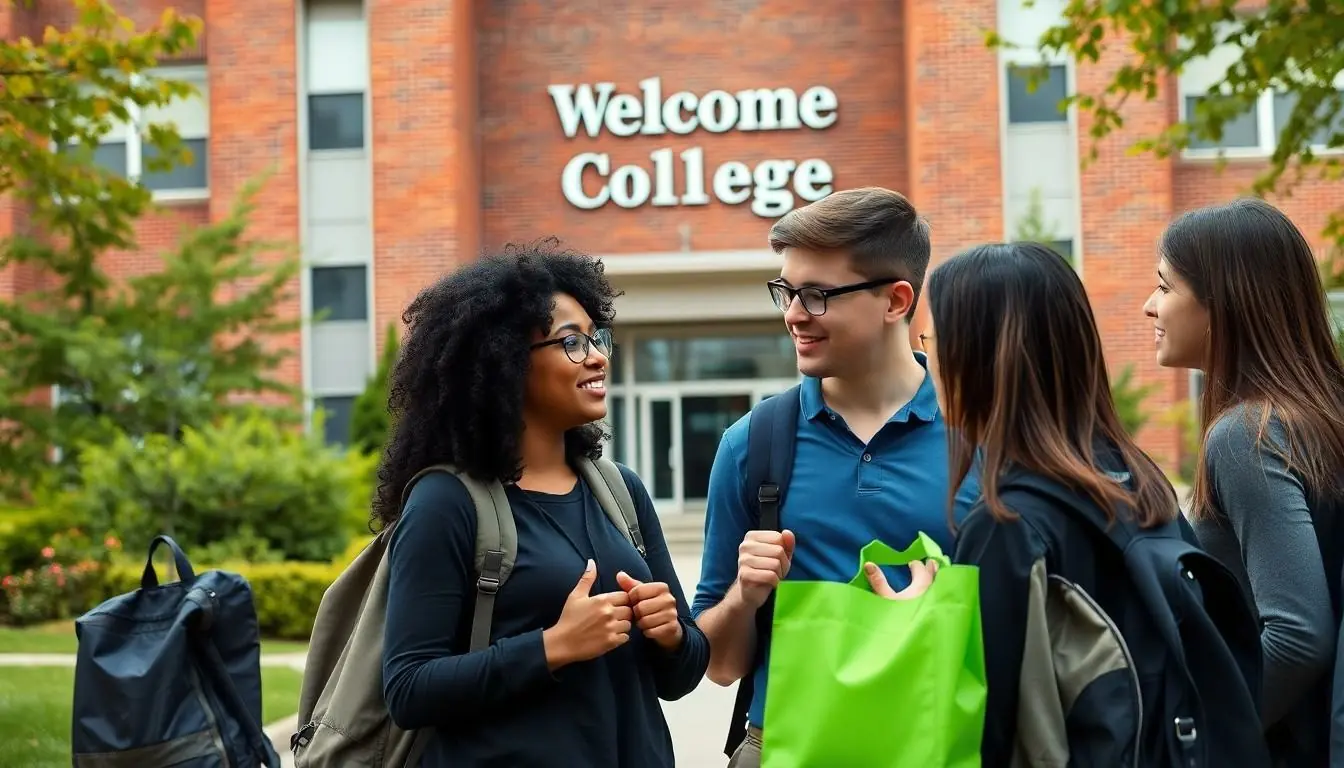Table of Contents
ToggleIn the quest for higher education, students often find themselves asking not just where to go, but where to avoid. Picture this: a college so infamous that even the textbooks seem to have a bad attitude. It’s not just about bad cafeteria food or questionable dormitory conditions; it’s about a whole experience that leaves students wondering if they’ve stumbled into an academic Bermuda Triangle.
As prospective students sift through rankings and reviews, the search for the “worst college” raises eyebrows and laughter alike. After all, who wouldn’t want to know which institution could turn a dream of higher learning into a comedic tale of woe? Buckle up as we dive into the not-so-glamorous world of academia’s underbelly, where disappointment meets hilarity and every lesson learned is a cautionary tale.
Overview of College Rankings
College rankings serve as a critical tool for prospective students evaluating their options. Various organizations, such as U.S. News & World Report and The Princeton Review, publish annual lists that assess institutions based on several criteria. Common factors include academic reputation, graduation rates, faculty credentials, and student satisfaction.
Rankings often influence a student’s choice, directing attention towards institutions perceived as prestigious or desirable. Sometimes, however, the focus on top-ranked colleges overshadows the importance of fit and experience. Many students find themselves in schools that, while high on rankings, do not meet their personal or academic needs. Conversely, lesser-known colleges can provide supportive environments that cater to specific interests or career paths.
Understanding how rankings are compiled helps students make informed decisions. Each metric carries weight, but individual preferences can vary significantly. When evaluating colleges, potential attendees should consider offline sources like campus tours or conversations with current students. Gathering real-life insights can often reveal aspects of the college experience not captured in rankings.
Students sometimes overlook the possibility that a lower-ranked institution might offer unique programs or resources that align with their goals. Data suggests that experiences can greatly differ from published rankings if students engage actively in their college communities. Balancing rankings with personal expectations creates a more holistic approach to the college search process.
Criteria for Determining the Worst College

Determining the worst college involves analyzing several key criteria. Factors such as academic performance, student satisfaction, and financial issues play significant roles in these assessments.
Academic Performance
Academic performance serves as a primary indicator of a college’s quality. Institutions with low graduation rates and poor retention numbers often indicate a lack of support for students. Test scores can reflect curriculum effectiveness, as can faculty qualifications. Colleges that struggle to achieve satisfactory outcomes in these areas frequently rank lower in assessments. Resources such as U.S. News & World Report provide insights into these statistics, allowing prospective students to gauge an institution’s academic rigor.
Student Satisfaction
Student satisfaction represents another crucial factor in evaluating a college’s reputation. Surveys and reviews reflect students’ experiences regarding campus life, support services, and overall wellbeing. Colleges with high rates of dissatisfaction often face complaints about subpar facilities and lack of engagement opportunities. Institutions where students feel undervalued or isolated frequently emerge in discussions about the worst colleges. Gathering testimonials from current or former students can provide valuable context that statistics alone may miss.
Financial Factors
Financial factors significantly affect the quality of education at a college. High tuition rates paired with low financial aid offerings can lead to student debt without adequate returns. Colleges that prioritize profit over student investment may not provide necessary resources, leading to poor outcomes. Analyzing the financial health of institutions, including their fund allocation and institutional spending, reveals important insights. Prospective students often overlook these aspects, but understanding them can prevent unwise financial commitments.
Notable Examples of Poorly Ranked Colleges
The following institutions exemplify some of the lowest rankings in higher education, showcasing various concerns that prospective students should consider.
Institution A: Overview and Issues
Institution A consistently garners low scores in academic performance. Graduation rates hover around 30%, indicating a significant struggle for students to complete their degrees. Student satisfaction ratings remain dismal, with many citing inadequate support services and ineffective academic advising. The dining options also face criticism, often described as subpar. Financial burdens impact students heavily, with tuition rates exceeding $40,000 annually, while the lack of financial aid exacerbates their challenges.
Institution B: Overview and Issues
Institution B ranks poorly based on overall student experiences. The retention rate is shockingly low at 40%, revealing an inability to engage students effectively. Many learners report feeling isolated, with limited extracurricular opportunities available. Faculty responsiveness to student concerns is often lacking, resulting in frustrations. Additionally, despite a high tuition fee of $35,000, financial aid packages do not alleviate the debt burden for most students, leading to ongoing financial distress.
Effects of Attending a Poor College
Attending a poorly ranked college significantly impacts students’ academic and personal growth. Low graduation rates often correlate with a lack of institutional support, meaning students may struggle to complete their degrees. High financial burdens amplify stress, as significant tuition costs combined with inadequate return on investment lead to debt without job prospects.
Isolation is another issue, with institutions like Institution B reporting a retention rate of only 40%. Students often feel disconnected without engaging extracurricular activities or supportive faculty, decreasing their overall satisfaction and motivation. Negative experiences during the college years can hinder social development and networking opportunities, which are crucial for future success.
Employers frequently notice these patterns too. Graduates from colleges with poor reputations may face challenges when entering the job market. Low job placement rates often result from inadequate career services, which fail to prepare students for successful careers. Reviews and surveys consistently show that graduates from less reputable schools struggle to find positions in their fields.
In terms of mental health, attending a disappointing college can exacerbate stress and anxiety. Students frequently report feeling overwhelmed by financial pressures, lack of support, and poor academic performance. Instances of burnout may increase due to the intensity of these challenges, hindering both personal well-being and academic success.
Overall, the implications of attending a poor college extend beyond academics. Students must consider the long-term effects on their careers, finances, and mental health. Evaluating college options carefully becomes crucial to avoid emotional and financial hardship associated with poorly rated institutions.
The journey to finding the right college can be filled with challenges and surprises. While some institutions may stand out for their poor conditions and disappointing experiences there’s a valuable lesson in these tales. Prospective students should approach their college search with a discerning eye and an understanding of what truly matters to them.
Evaluating colleges based on academic performance student satisfaction and financial viability is essential. It’s crucial to look beyond rankings and consider personal fit. By seeking real-life insights and engaging with current students individuals can make informed decisions that align with their goals and aspirations. Ultimately the right college experience can lead to personal growth and success while avoiding the pitfalls associated with poorly ranked institutions.




